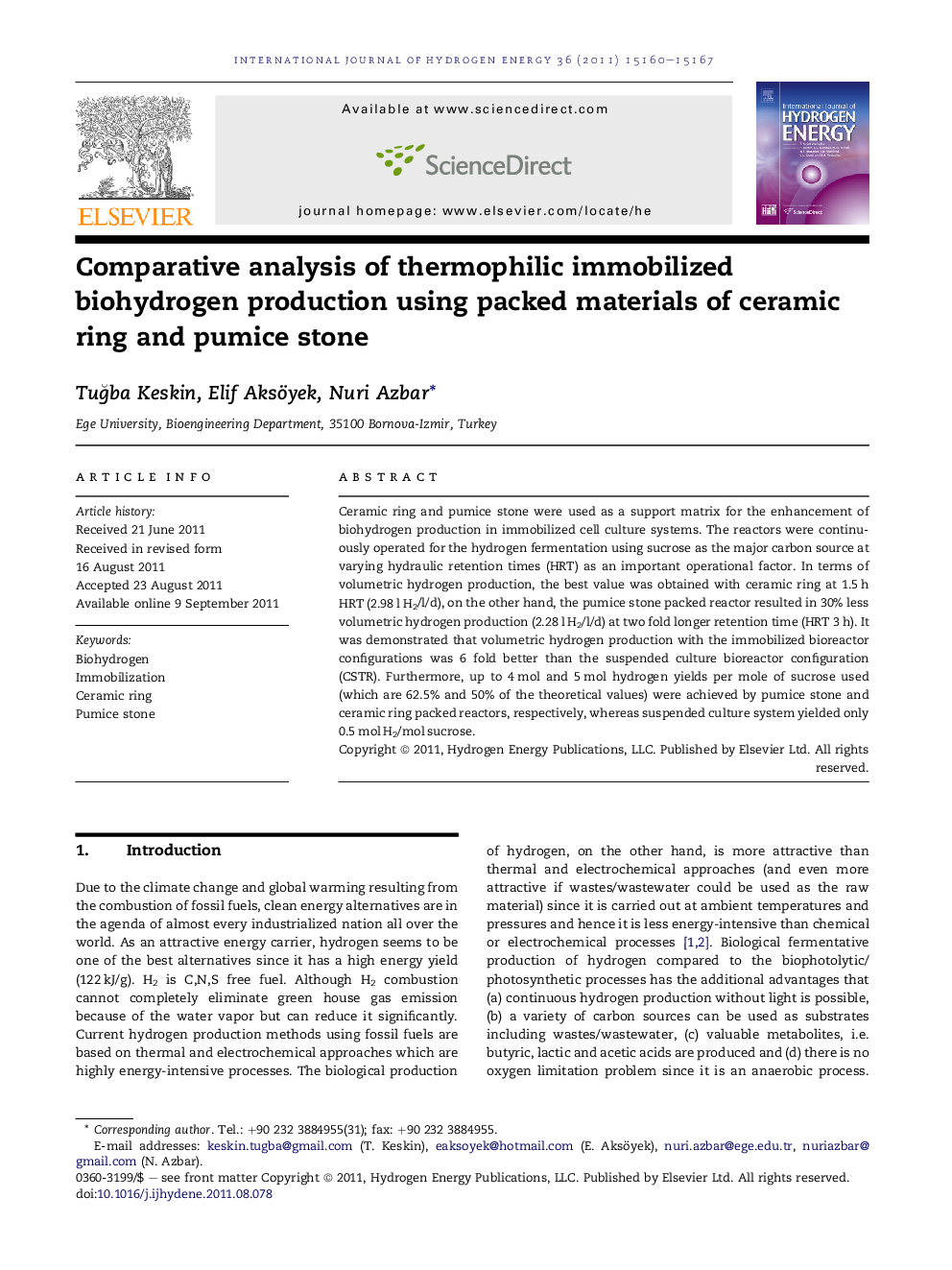| Article ID | Journal | Published Year | Pages | File Type |
|---|---|---|---|---|
| 1271808 | International Journal of Hydrogen Energy | 2011 | 8 Pages |
Ceramic ring and pumice stone were used as a support matrix for the enhancement of biohydrogen production in immobilized cell culture systems. The reactors were continuously operated for the hydrogen fermentation using sucrose as the major carbon source at varying hydraulic retention times (HRT) as an important operational factor. In terms of volumetric hydrogen production, the best value was obtained with ceramic ring at 1.5 h HRT (2.98 l H2/l/d), on the other hand, the pumice stone packed reactor resulted in 30% less volumetric hydrogen production (2.28 l H2/l/d) at two fold longer retention time (HRT 3 h). It was demonstrated that volumetric hydrogen production with the immobilized bioreactor configurations was 6 fold better than the suspended culture bioreactor configuration (CSTR). Furthermore, up to 4 mol and 5 mol hydrogen yields per mole of sucrose used (which are 62.5% and 50% of the theoretical values) were achieved by pumice stone and ceramic ring packed reactors, respectively, whereas suspended culture system yielded only 0.5 mol H2/mol sucrose.
► Ceramic ring and pumice stone were used as a support matrix for microorganisms to produce hydrogen by immobilized systems. ► In comparison with CSTR immobilization enhanced biohydrogen production even at low HRTs. ► Immobilization on ceramic ring resulted in higher hydrogen production than pumice stone.
